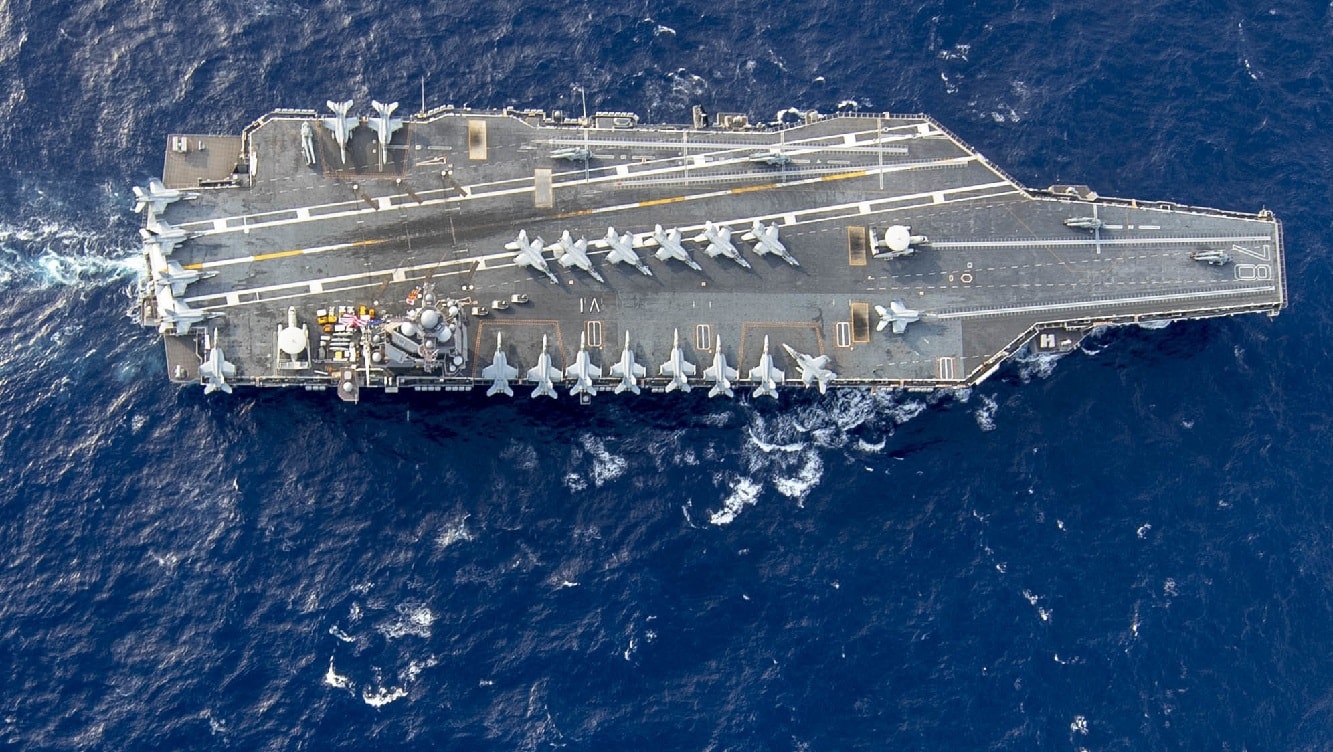One of the biggest advantages the U.S. has over its competitors is its global alliances and partnerships. When British Prime Minister Winston Churchill famously quipped that “there is only one thing worse than fighting with allies, and that is fighting without them,” he recognized the importance of allies in war.
When it comes to near-peer competition, the U.S. has a distinct advantage over China and Russia because of its alliances and partnerships with dozens of nations worldwide. These relationships will be key if it comes to blows as they are important now to deter a conflict.
Down Under
In December, a U.S. Navy carrier strike group worked with the Royal Australian Navy and Royal Australian Air Force in the Indo-Pacific, refining drills and procedures that would be needed in a potential conflict with China in the region.
The Carl Vinson Carrier Strike Group worked with the Australian military on high-end training tactics and advanced kinetic and non-kinetic capabilities in order to prevail in a multi-domain threat environment in which threats could come from land, sea, or air.
“Conducting advanced kinetic and non-kinetic bilateral exercises with our allies and partners increases our collective ability to outthink and outfight any adversary threatening our open seas. Our long-term alliances and partnerships in the Indo-Pacific region preserve maritime prosperity and international order, and enable seamless integration, communication, and collaboration across the region,” Rear Admiral Dan Martin, the commanding officer of Carrier Strike Group One, said in a press release.
The Australian military participated with the area defense frigate HMAS Warramunga and aircraft.
The training event lasted for several days and focused on enhanced maritime communication tactics, electronic warfare operations, and integrated anti-air, anti-surface operations. The two militaries placed particular emphasis on joint surface and air integration, replicating scenarios in which a U.S. carrier strike group, supported by allied ships, is engaged in combat with a Chinese fleet.
“The Australia-US alliance increases our ability to protect ourselves and our interests and we work as like-minded countries to address security challenges in the Indo-Pacific. Opportunities to practice and prove our tactics and rapidly build shared understanding in order to respond together, further our interoperability. We have sustained a comprehensive program of navy-to-navy engagement with the United States Navy throughout 2021 and I look forward to continuing to work as partners in years to come,” Rear Admiral Mark Hammond, the commanding officer of the Australia Fleet, stated.
A Mighty Carrer Strike Group
Assigned to the U.S. Navy’s 7th Fleet in the Indo-Pacific, the Carl Vinson Carrier Strike Group is the first line of defense in the region.
The carrier strike group packs quite a punch with the USS Carl Vinson aircraft carrier as the flagship. In addition to the flattop, the carrier strike group is comprised of the USS Lake Champlain, a Ticonderoga-class guided-missile cruiser, USS Stockdale, an Arleigh Burke-class guided-missile destroyer, USNS Rappahannock and USNS John Ericsson, Henry J. Kaiser-class Fleet replenishment ships.
In addition to the surface vessels, the carrier strike group has a potent air wing, with nine squadrons of fixed- and rotary-wing aircraft.
The carrier strike group’s aircraft include the F-35C Lighting II, F/A-18E/F Super Hornet, EA-18G Growler, E-2D Advanced Hawkeye, CMV-22B Osprey, MH-60S Sea Hawk, and MH-60R Sea Hawk.
1945’s New Defense and National Security Columnist, Stavros Atlamazoglou is a defense journalist specializing in special operations, a Hellenic Army veteran (national service with the 575th Marine Battalion and Army HQ), and a Johns Hopkins University graduate.

